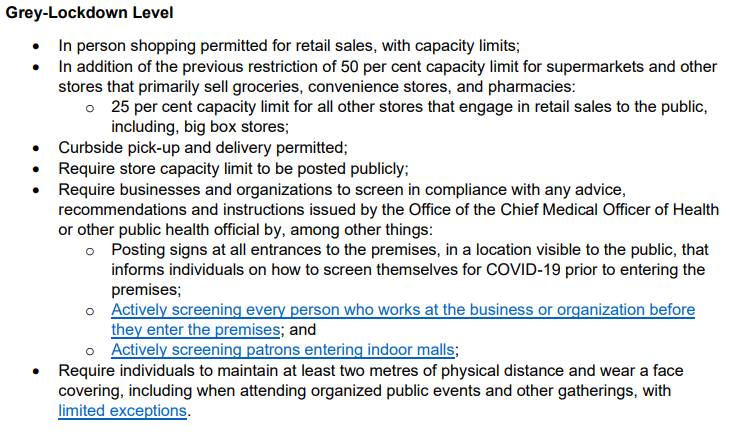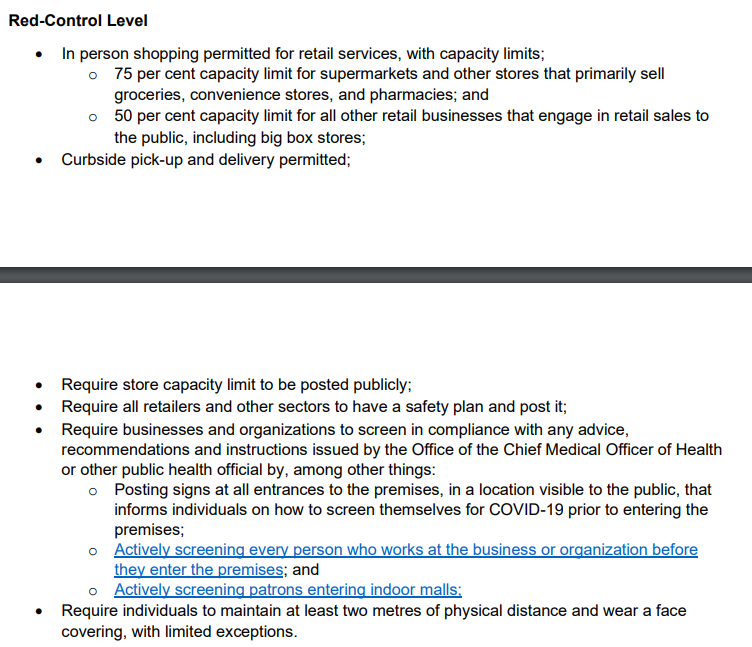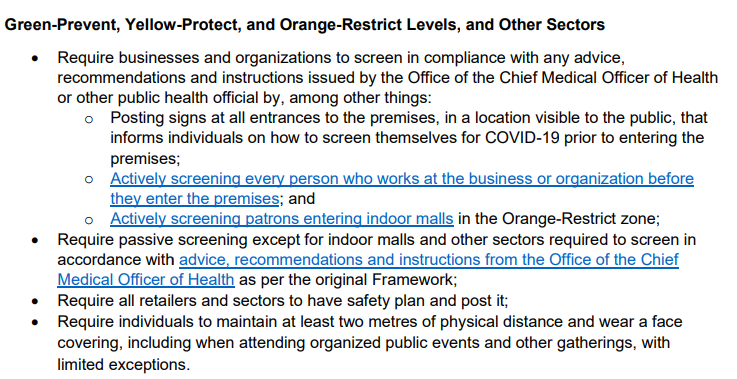Ford announces gradual reopening of provincial economy, return to colour-coded COVID-19 framework
Posted February 8, 2021 5:48 am.
Last Updated February 8, 2021 5:53 pm.
Ontario Premier Doug Ford announced plans to gradually reopen the province following its state of emergency, saying the government will now move to a regional, colour-tiered approach by maintaining the shutdown in the majority of the public health regions with the stay-at-home order also being extended.
As part of Monday’s detailed announcement, the Ford government confirmed that the state of emergency declared last month will be allowed to expire as scheduled on Tuesday, February 9.
RELATED: Ontario reporting a dip in new COVID-19 cases today
The stay-at-home order will remain in effect, however, as regions gradually transition back to the government’s colour-coded restrictions system over the next three weeks.
“Our number one priority will always be protecting the health and safety of all individuals, families, and workers across the province,” said Premier Ford Monday.
“But we must also consider the severe impact COVID-19 is having on our businesses. That’s why we have been listening to business owners, and we are strengthening and adjusting the Framework to allow more businesses to safely reopen and get people back to work.”
The stay-at-home order will apply to 28 public health regions until Tuesday, February 16. For Toronto, Peel, and York Regions, the order will remain in effect until Monday, February 22, but the Ford government says any sudden increase in COVID-19 cases could delay that plan.
The government also introduced an “emergency brake” that allows the province’s top doctor, Dr. David Williams, to immediately move a region back into lockdown if cases spike.
Following consultation with Williams and various health officials, Ford says the following three regions will be moving back to the colour-coded, COVID-19 framework as of 12:01 a.m. on Wednesday, February 10, and will no longer be subject to the stay-at-home order:
- Hastings Prince Edward Public Health
- Kingston, Frontenac, and Lennox & Addington Public Health
- Renfrew County and District Health Unit.
The Timiskaming Health Unit, which was initially also expected to move to the green category Wednesday, will be held back for a week since a COVID-19 variant was discovered in the region over the weekend, the province said.
These three public health units and specific regions will be moved to “Green-Prevent” as of February 10, as mentioned. As a result, businesses including retail shops, hair salons, restaurants, bars, gyms, and movie theatres will reopen. Indoor gatherings will also be allowed under this designation.
“While we have seen some progress in our fight against COVID-19, the situation in our hospitals remains precarious and the new variants pose a considerable threat to all of us,” said Minister Christine Elliott.
“As we cautiously transition out of the province-wide shutdown, we have developed an emergency brake system giving us the flexibility to contain community spread quickly in a specific region, providing an extra layer of protection.”
The province also updated the colour-tiered framework to allow for what it calls a safer approach to retail. As a result, limited in-person shopping in “Grey-Lockdown” zones will be permitted with public health and safety measures, such as the limited capacity of 25 percent in most retail settings.
Updated framework:



RELATED: Quebec opens non-essential stores, Alberta allows in-person dining
In a correction issued by Ford’s office, they say ski hills are permitted to operate in “Grey-Lockdown.” Ski and most other outdoor snow recreational amenities can operate for recreational purposes in all zones, including Grey (Lockdown), with conditions.
Any person using a downhill ski lift, including a surface lift, must wear a mask or face covering in a manner that covers their mouth, nose, and chin.
“In the Grey (Lockdown) Zone lessons are prohibited. Children and adult lessons can be offered in the Green (Prevent), Yellow (Protect), Orange (Restrict), and Red (Control) Zone providing they comply with the requirements identified in the in-person teaching and instruction section of the regulation,” Ford’s office said.
NEW – Ski hills WILL be able to operate in the Grey (Lockdown) category with conditions such as skiers having to wear masks on lifts. pic.twitter.com/eigNxJC32S
— Richard Southern (@RichardCityNews) February 8, 2021
Williams has said that he would like to see daily COVID-19 cases in the province fall below 1,000 per day before easing health and safety measures.
Ontario has reported between 1,000 to 1,600 cases per day over the past week.
“This is not a re-opening or a ‘return to normal’ and we must continue to limit close contact to our immediate households and stay at home except for essential reasons. By continuing to follow all public health and workplace safety measures, we can continue to reduce the number of new cases and the strain on our health system,” Ontario’s top doctor said.
The Ford government says enforcement of residential evictions will remain paused in public health unit regions where the stay-at-home order remains in effect. In regions where the order is lifted, the regular process for residential eviction enforcement will resume.
Ontario isn’t the only province considering loosening its COVID-19 restrictions. In Quebec, non-essential stores, personal care salons, and museums across the province were allowed to reopen on Monday.
Alberta also eased measures this week by allowing in-person dining as part of the province’s four-step plan to reopen the economy.
While COVID-19 numbers across the province have gradually declined in recent weeks there is growing concern from health officials about the rise of more infectious strains. Three strains of the virus have popped up in Ontario.
As of Sunday, the province had counted 176 confirmed cases of the B.1.1.7 variant first detected in the U.K. Toronto Public Health has confirmed the first cases of variants first detected in Brazil and South Africa in the city.
A provincial lockdown was imposed in late December and was followed by the state of emergency and a stay-at-home order that took effect on January 14 as COVID-19 rates surged.
Last week, the Ford government and Education Minister Stephen Lecce announced that Ontario schools outside of COVID-19 hotspot regions Toronto, Peel, and York will welcome students back for in-person learning on Monday.
Students in Toronto, Peel, and York will head back to the classroom after Family Day, on Feb. 16.
Ontario reported 1,265 new COVID-19 cases and 33 deaths on Monday.
With files from the Canadian Press










